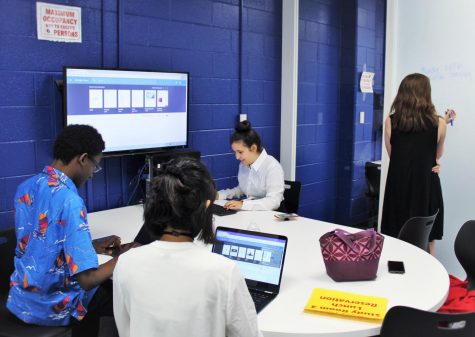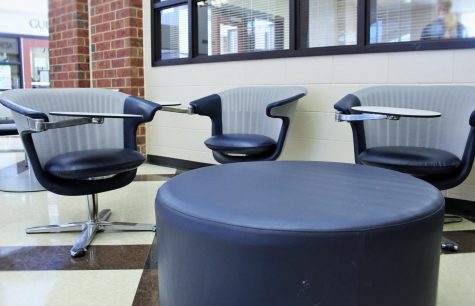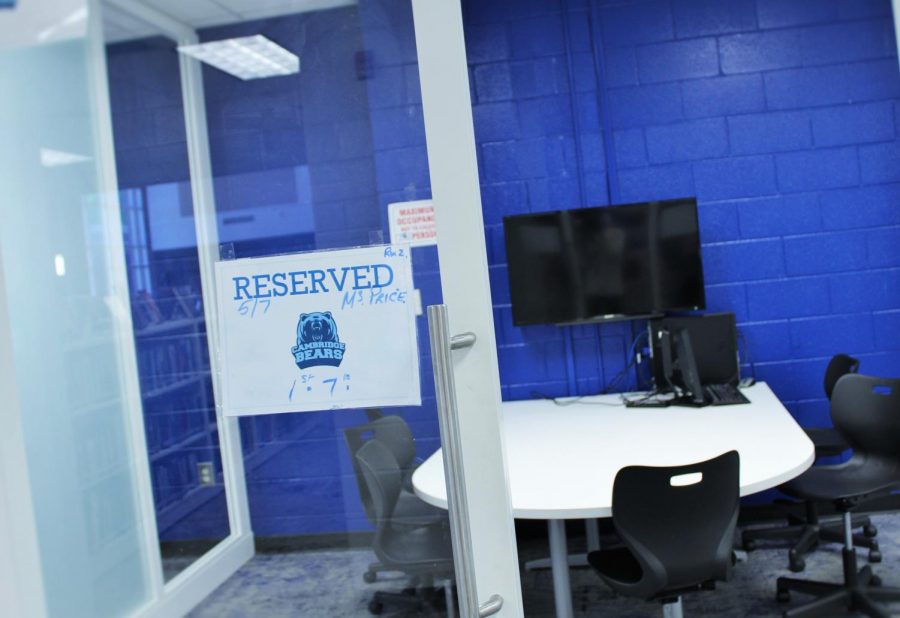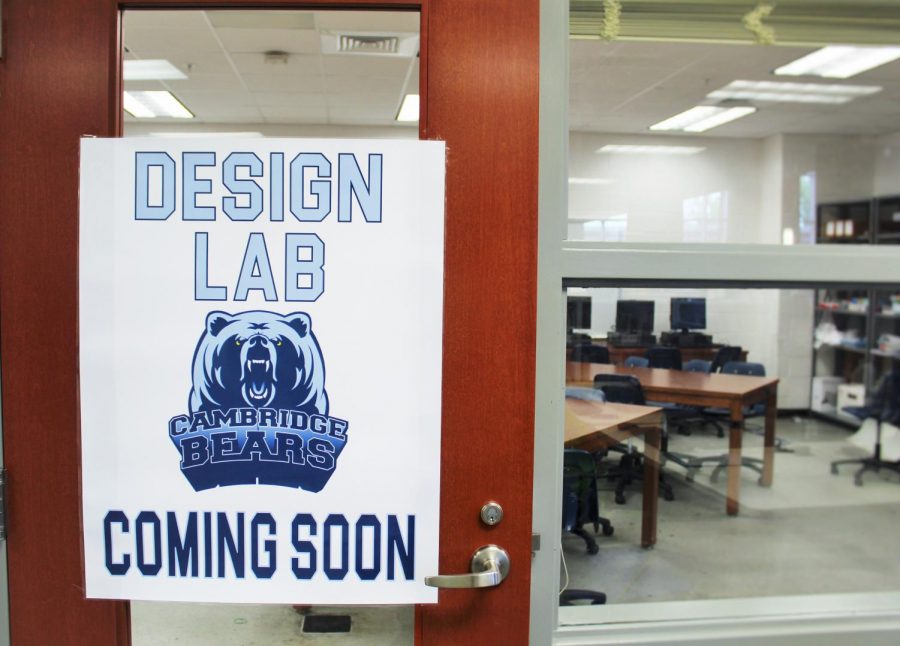Opinion and A&E Editor Daniel Jimenez
A new interrogation of collaborative work spaces has begun with in the school.
Part 2: Physical Work Spaces Within the School
May 9, 2018
A new era of technological integration has begun.
Schools all around the country have started to adopt the trend of using technology to enhance their students’ ability to learn.
For Fulton County schools, in particular, the introduction of one-to-one computers has brought about a great number of adjustments.
“The Surfaces were a really big change,” said freshman Will Jurczak, who first received his tablet in middle school. “They make work and learning in classes much easier than it was before.”
The infrastructure of our school has undergone some big changes as a result of the increased focus on technology.
Perhaps the most visible change at the school is the reinvention of the media center, which became the “Student Center” last year.
The old, traditional library with rows and rows of books is out, and in is the relatively new Student Center, which is better equipped to allow students to use technology in a collaborative manner.

Freshmen Ezi Ononuju, Rhea Sridhar, Emily Arieh, and Emma Dawson are taking full advantage of the workrooms in the Student Center to get work done.
Media in Education and Technology Instructor Laura Morgan said she has seen students use the Student Center more often now, taking advantage of what it has to offer.
“It’s very exciting to see the students take full advantage of all the different changes that the student center underwent,” said Morgan. “I think these changes made it a better place for students to work.”
While there are many factors that have driven students to use the student center more often, none are more apparent than the new collaborative workrooms.
These are five glass study rooms that feature two Recordex portable projectors, large whiteboards and moveable tables and chairs on wheels. These rooms are available to better fulfill students’ academic needs.
When the then-media center underwent renovations in the summer of 2016, around 400-500 books were removed to build these collaborative workrooms. The Student Center now carries around 8,000 books.
Morgan said the electronic resources like the apps on LaunchPad make up for any information from books that are no longer present.
The electronic resources in the school’s workspaces have certainly changed the way students can learn.
Media Paraprofessional Marian Macleod said she believes these new collaborative workrooms have allowed students to learn in a more natural environment.
“The diverse set of ways students can now learn is incredible,” said Macleod. “I think the innovative spaces around the student center have really helped students learn in ways they feel most comfortable.”
As a result of the collaborative work rooms’ rapid growth in popularity, Macleod and Morgan now require students who wish to use them during lunch periods to reserve the space ahead of time. Macleod said this allows the staff in the student center to better monitor the constant flow of students.
These new rooms are just one of the features that have driven students’ interest in the Student Center. Another is the design lab, where students have ample space to collaborate on hands-on projects.
Morgan said she is enthusiastic about letting students work together to enhance their learning experience.
“Studies show that students are more successful when they work with peers, and the Student Center is a perfect place for students to work together at a high level,” said Morgan.
It’s clear that Morgan’s message has resonated with many students.
“It’s very nice to have a place in school where I know that I can finish my work,” said freshman Will Paulus.
The Student Center has even opened the eyes of some underclassman who were used to a traditional library.
“The student center is really unique compared to the library at my middle school,” said freshman Max Brodsky. “It is a very good place to get my work done.
“Everyday at lunch there are a lot of people around, so it must be pretty helpful to students,” Brodsky said.
The Student Center’s features are just some of the innovative changes in the school’s infrastructure that have forever changed the way students can learn in workspaces.

These table-chair hybrids located in front of the school, near the Attendance Office, are quite comfortable for students to get their work done.
Another modification has been the addition of tables and chairs around the school’s hallways.
Assistant Principal Darius Maize said these newly added tables and chairs were incorporated in order to give students additional workspaces.
“With the addition of the tablets, we knew that students would need new areas to use them,” said Maize. “We believe the addition of the tables and chairs has fulfilled that need.”
Sophomore Luke Isler said that these tables and chairs have been a welcomed inclusion to the school.
“I think they were a good addition,” said Isler. “I have used them a few times before as a place to get my work done.”
Technology has forever changed the ways schools across the country teach their students, build their workspaces and redefine educational collaboration.
This is certainly the case at our ever-evolving school.

